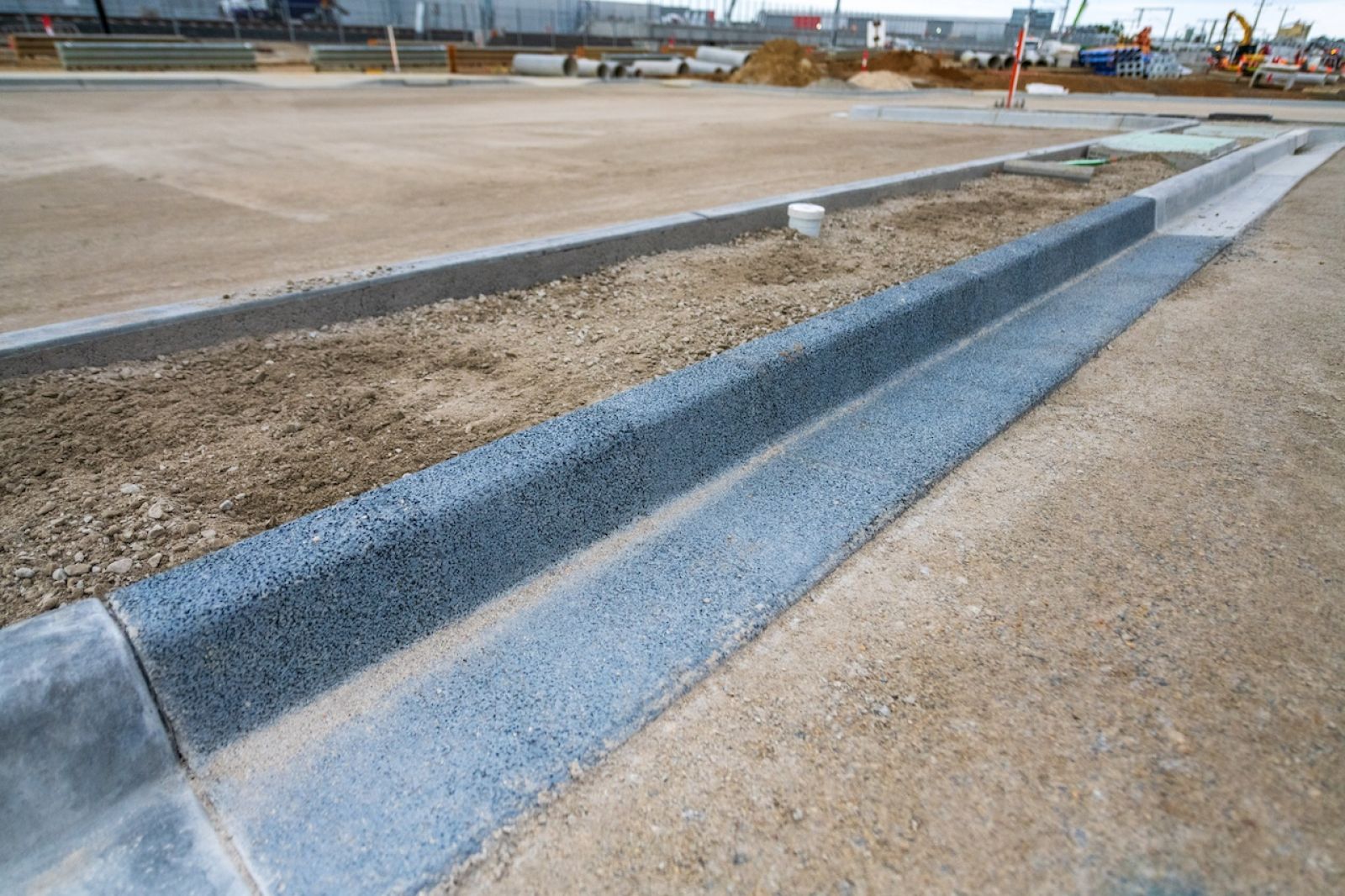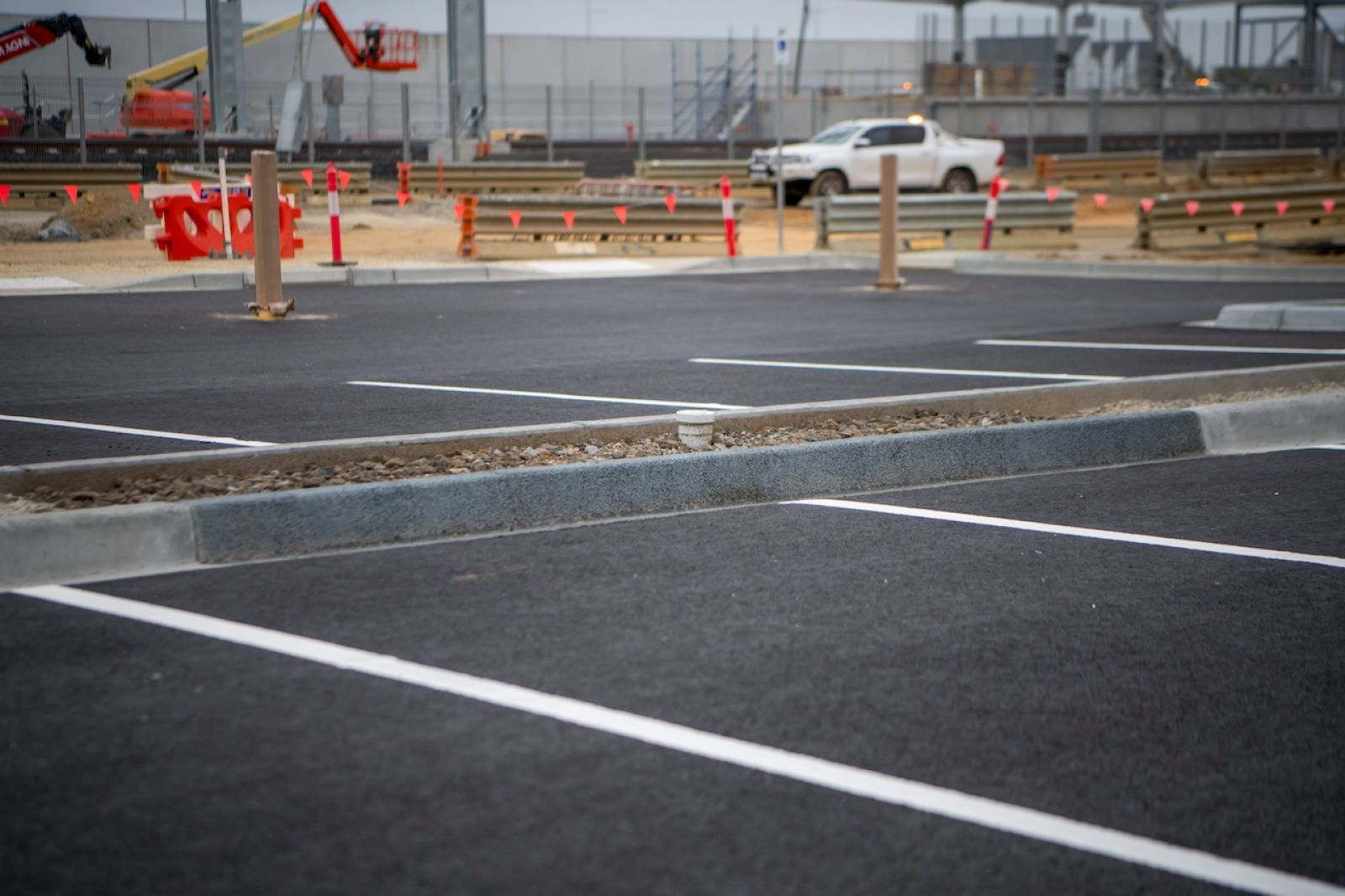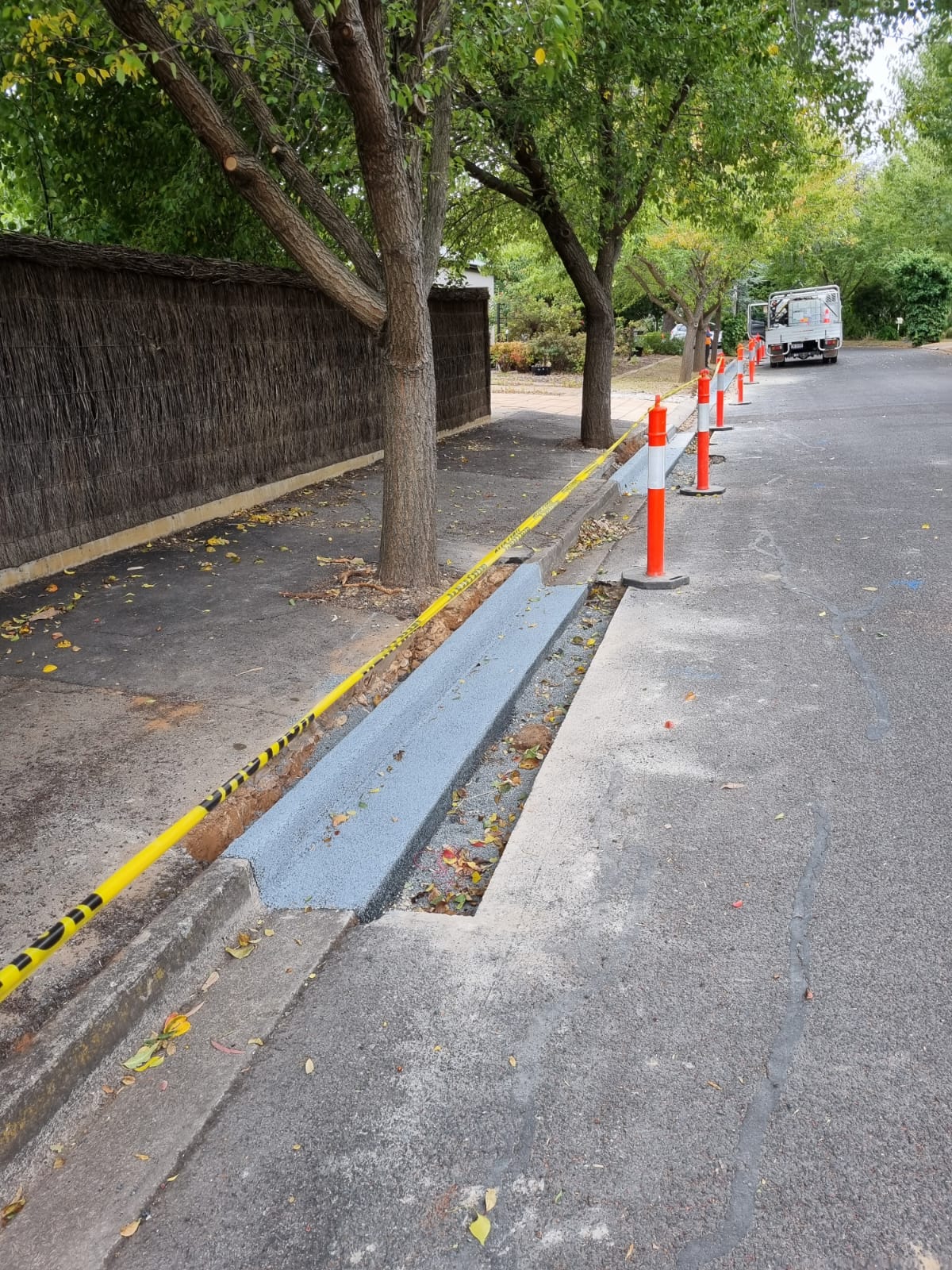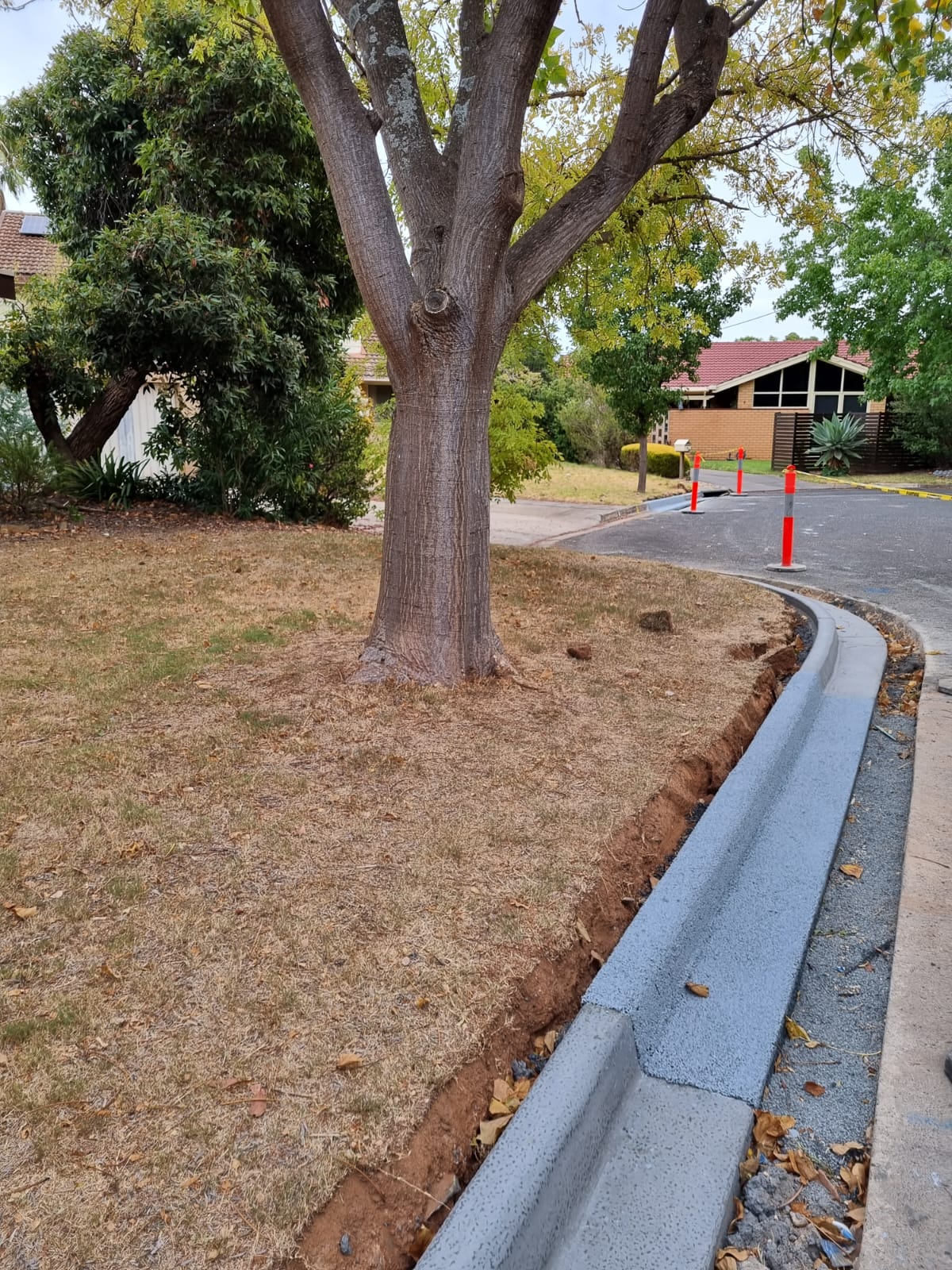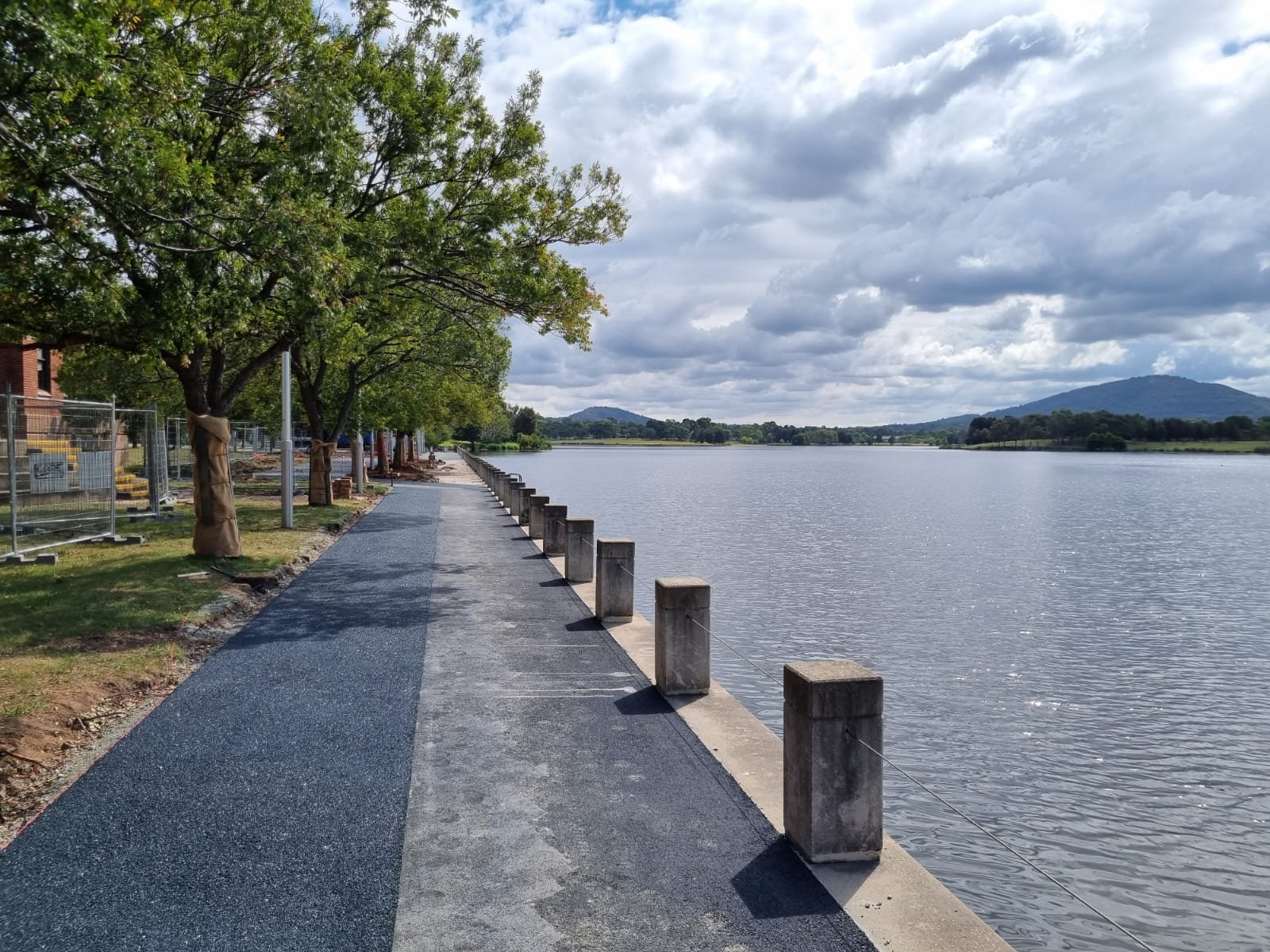Kerb & Channel
Details
- Product Type Composite Materials, Geosynthetic Materials
- Regions Auckland, Australian Capital Territory, Christchurch, Dunedin, Hamilton, Lower Hutt, Napier & Hastings, Nelson, New Plymouth, New South Wales, Northern Territory, Palmerston North, Queensland, Queenstown, Rotorua, South Australia, Tasmania, Tauranga, Victoria, Wellington, Western Australia
Contact
- Bradley Camgoz Posselt 0479069421
- Website Visit
- Email bradley@porouslane.com.au
ISupplier
- Company Name Porous Lane
- ISupplier Profile Visit
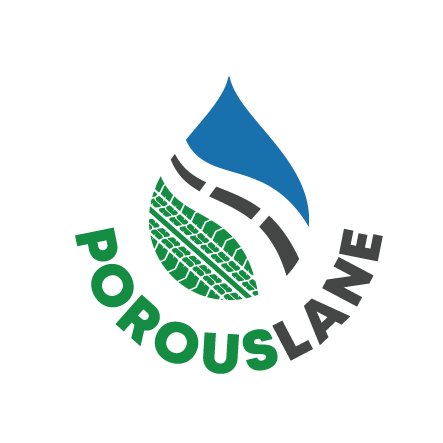
About
This innovative product kerb and channel system that is more effective at managing stormwater flows, being permeable over the full length of the profile, while providing opportunities for passive irrigation via an integrated storage system. The Kerb & Channel is made from recycled Australian waste tyre using a similar mix to Porous Lane’s permeable pavement technology.
Sustainability Outcomes
The Porous Lane Kerb & Channel system can provide passive irrigation to nearby trees and landscaped spaces, providing better utilisation of stormwater and reducing the use of potable water. The material mix is made from 50% recycled tyre content and does not require cement. It has been tested for leachates and micro-plastics, ensuring there is no negative impact on water flowing through the system. The kerb acts as a filtration system, reducing the volume of harmful particles entering our waterways via runoff.
Applicable Credits
| IS v1.2 | Cli-2 , Dis-1 , Ene-1 , Hea-1 , Inn-1 , Lan-4 , Mat-1 , Mat-2 , Was-2 , Wat-1 , Wat-2 |
| IS v2.1 | Ene-1 , Env-1 , Inn-1 , Res-1 , Res-2 , Rso-4 , Rso-6 , Wat-1 , Wat-2 |
| Inn-1 (ISv1.2) | The Porous Lane permeable Kerb & Channel can contribute to Innovation Challenge. 8: Sustainable Supplier and ISupply . |
| Inn-1 (Isv2.1) | The Porous Lane permeable Kerb & Channel can contribute to Innovation Challenge. 4: Sustainable Supplier and ISupply. |
| Cli-2 (ISv1.2) | Porous Lane permeable Kerb & Channel can reduce the risk of flooding in climate change related high-rainfall events through incorporating water storage capacity beneath the kerb. |
| Dis-1 (ISv1.2) | Porous Lane permeable Kerb & Channel can reduce the volume of stormwater discharged from a project. It can also treat stormwater reducing nitrates, heavy metals and suspended solids present in water that has passed through the kerb. |
| Ene-1 (ISv1.2) | Porous Lane permeable Kerb & Channel minimises energy use during construction as the material is mixed in ambient temperature, no heat is required. Porous Lane carbon footprint has been measured through a Life Cycle Assessment. |
| Hea-1 (ISv1.2) | The Porous Lane permeable Kerb & Channel system contributes to safer infrastructure by the crack-resistance of the material, preventing tripping hazards, as well as reducing stormwater runoff creating potential hazards. |
| Mat-1 (ISv1.2) | The Porous Lane Kerb & Channel system is partly made of recycled tyre content, provided by organisations accredited by Tyre Stewardship Australia. |
| Mat-2 (ISv1.2) | The Porous Lane Kerb & Channel system is partly made of recycled tyre content, provided by organisations accredited by Tyre Stewardship Australia. |
| Was-2 (ISv1.2) | The Porous Lane Kerb & Channel system can be recycled after end-of-life, reusing the material in the screening or base layer of any Porous Lane installation. |
| Wat-1 (ISv1.2) | The Porous Lane Kerb & Channel system can reduce water use through the harvesting of stormwater for passive irrigation or to be redirected for re-use. |
| Ene-1 (ISv2.1) | The Porous Lane Kerb & Channel system reduces energy use and carbon emissions during construction as no heat is required and by using recycled tyre content. |
| Env-1 (ISv2.1) | The Porous Lane Kerb & Channel system can reduce the volume of stormwater discharged from a project. It also treats stormwater reducing nitrates, heavy metals and suspended solids present in water that has passed through the kerb. |
| Res-2 (ISv2.1) | The Porous Lane Kerb & Channel system can reduce the risk of cracking creating tripping hazards, as the material is flexible, creating long-lasting safe infrastructure. |
| Res-1 (ISv2.1) | The Porous Lane Kerb & Channel system can reduce the risk of flooding in climate change related high-rainfall events through incorporating water storage capacity beneath the kerb and reduce stormwater runoff. |
| Rso-6 (ISv2.1) | The Porous Lane Kerb & Channel system has a lower embodied carbon footprint than concrete. |
| Rso-4 (ISv2.1) | The Porous Lane Kerb & Channel system is partly made of recycled tyre content, diverting tyres from going to landfill. |
| Lan-4 (ISv1.2) | The Porous Lane Kerb & Channel system can reduce the risk of flooding in climate change related high-rainfall events through incorporating water storage capacity beneath the kerb and reduce stormwater runoff. |
| Wat-2 (ISv1.2) | The Porous Lane Kerb & Channel system reduces the amount of potable water needed to irrigate trees and other landscaped areas. |
| Wat-1 (ISv2.1) | The Porous Lane Kerb & Channel system can reduce water use through the harvesting of stormwater for passive irrigation or to be redirected for re-use. |
| Wat-2 (ISv2.1) | The Porous Lane Kerb & Channel system reduces the amount of potable water needed to irrigate trees and other landscaped areas. |


